Text
"It is 70 years since AT&T’s Bell Labs unveiled a new technology for turning sunlight into power. The phone company hoped it could replace the batteries that run equipment in out-of-the-way places. It also realised that powering devices with light alone showed how science could make the future seem wonderful; hence a press event at which sunshine kept a toy Ferris wheel spinning round and round.
Today solar power is long past the toy phase. Panels now occupy an area around half that of Wales, and this year they will provide the world with about 6% of its electricity—which is almost three times as much electrical energy as America consumed back in 1954. Yet this historic growth is only the second-most-remarkable thing about the rise of solar power. The most remarkable is that it is nowhere near over.
To call solar power’s rise exponential is not hyperbole, but a statement of fact. Installed solar capacity doubles roughly every three years, and so grows ten-fold each decade. Such sustained growth is seldom seen in anything that matters. That makes it hard for people to get their heads round what is going on. When it was a tenth of its current size ten years ago, solar power was still seen as marginal even by experts who knew how fast it had grown. The next ten-fold increase will be equivalent to multiplying the world’s entire fleet of nuclear reactors by eight in less than the time it typically takes to build just a single one of them.
Solar cells will in all likelihood be the single biggest source of electrical power on the planet by the mid 2030s. By the 2040s they may be the largest source not just of electricity but of all energy. On current trends, the all-in cost of the electricity they produce promises to be less than half as expensive as the cheapest available today. This will not stop climate change, but could slow it a lot faster. Much of the world—including Africa, where 600m people still cannot light their homes—will begin to feel energy-rich. That feeling will be a new and transformational one for humankind.
To grasp that this is not some environmentalist fever dream, consider solar economics. As the cumulative production of a manufactured good increases, costs go down. As costs go down, demand goes up. As demand goes up, production increases—and costs go down further. This cannot go on for ever; production, demand or both always become constrained. In earlier energy transitions—from wood to coal, coal to oil or oil to gas—the efficiency of extraction grew, but it was eventually offset by the cost of finding ever more fuel.
As our essay this week explains, solar power faces no such constraint. The resources needed to produce solar cells and plant them on solar farms are silicon-rich sand, sunny places and human ingenuity, all three of which are abundant. Making cells also takes energy, but solar power is fast making that abundant, too. As for demand, it is both huge and elastic—if you make electricity cheaper, people will find uses for it. The result is that, in contrast to earlier energy sources, solar power has routinely become cheaper and will continue to do so.
Other constraints do exist. Given people’s proclivity for living outside daylight hours, solar power needs to be complemented with storage and supplemented by other technologies. Heavy industry and aviation and freight have been hard to electrify. Fortunately, these problems may be solved as batteries and fuels created by electrolysis gradually become cheaper...
The aim should be for the virtuous circle of solar-power production to turn as fast as possible. That is because it offers the prize of cheaper energy. The benefits start with a boost to productivity. Anything that people use energy for today will cost less—and that includes pretty much everything. Then come the things cheap energy will make possible. People who could never afford to will start lighting their houses or driving a car. Cheap energy can purify water, and even desalinate it. It can drive the hungry machinery of artificial intelligence. It can make billions of homes and offices more bearable in summers that will, for decades to come, be getting hotter.
But it is the things that nobody has yet thought of that will be most consequential. In its radical abundance, cheaper energy will free the imagination, setting tiny Ferris wheels of the mind spinning with excitement and new possibilities.
This week marks the summer solstice in the northern hemisphere. The Sun rising to its highest point in the sky will in decades to come shine down on a world where nobody need go without the blessings of electricity and where the access to energy invigorates all those it touches."
-via The Economist, June 20, 2024
#solar#solar power#solarpunk#hopepunk#humanity#electricity#clean energy#solar age#renewables#green energy#solar energy#renewable energy#solar panels#fossil fuels#good news#hope#climate change#climate hope
1K notes
·
View notes
Text
”Choose to sit safely out of the sun Away from rays so blinding to the eye”

if someone has done a joke that’s adjacent to this one please show me it
#guys the reason why he’s the mind ELECTRIC is because they use him for solar panels#cccc#cccc mind#chonnys charming chaos compendium#cj mind#cccc heart#cccc soul#cj heart#cj soul
296 notes
·
View notes
Text
Dandelion News - October 8-14
Like these weekly compilations? Tip me at $kaybarr1735 or check out my Dandelion Doodles on Patreon!
1. All 160 dogs at Florida shelter found homes ahead of Hurricane Milton
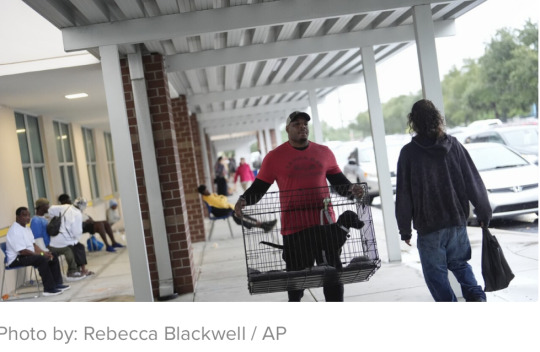
“[The shelter] offered crates, food and anything else the dogs would need in exchange for the animals to spend just five days with the foster parents if the human didn't want to keep them for longer. […A]fter about a day of receiving around 100 messages every 30 minutes, Bada said, all 160 were gone from the shelter and in safe and warm homes.”
2. Restoring Ecosystems and Rejuvenating Native Hawaiian Traditions in Maui

“[Volunteers] are restoring water flow to the refuge, removing invasive species, and restoring a loko iʻa kalo using ʻike kūpuna, ancestral knowledge. […] This human-made ecosystem will provide food for community members and habitat for wildlife while protecting coral reefs offshore.”
3. Solar-powered desalination system requires no extra batteries
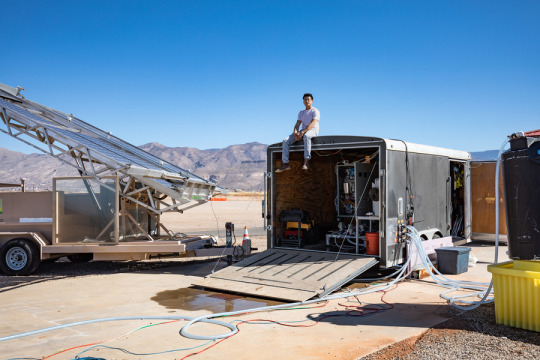
“In contrast to other solar-driven desalination designs, the MIT system requires no extra batteries for energy storage, nor a supplemental power supply, such as from the grid. […] The system harnessed on average over 94 percent of the electrical energy generated from the system’s solar panels to produce up to 5,000 liters of water per day[….]”
4. Threatened pink sea fan coral breeds in UK aquarium for first time

“The spawning is part of University of Exeter Ph.D. student Kaila Wheatley Kornblum's research into the reproduction, larval dispersal and population connectivity of Eunicella verrucosa. […] Pink sea fans are believed to have been successfully bred by only one other institution, Lisbon Oceanarium, in 2023.”
5. Tiny 'backpacks' are being strapped to baby turtles[….]
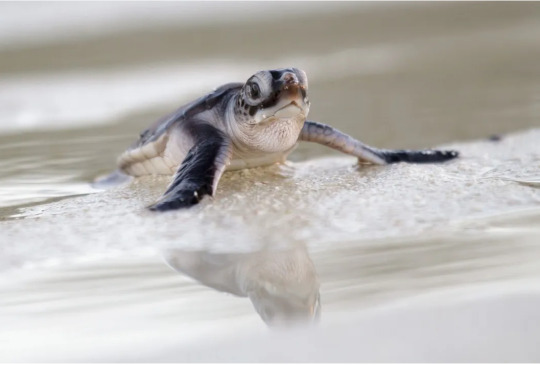
““We analysed the data and found that hatchlings show amazingly consistent head-up orientation – despite being in the complete dark, surrounded by sand [… and] they move as if they were swimming rather than digging[…. This new observation method is] answering questions about best conservation practices,” says Dor.”
6. New California Law Protects Wildlife Connectivity

“A new state law in California will instruct counties and municipalities to conserve wildlife corridors when planning new development. […] This could entail everything from creating wildlife crossings at roads or highways, employing wildlife-safe fencing, or not developing on certain land.”
7. ‘I think, boy, I’m a part of all this’: how local heroes reforested Rio’s green heart
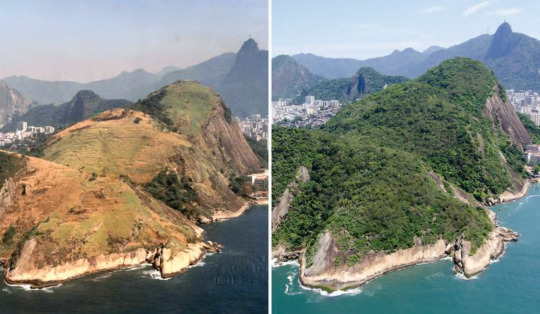
“By 2019, [the program] had transformed the city’s landscape, having trained 15,000 local workers like Leleco, who have planted 10m seedlings across […] roughly 10 times the area of New York’s Central Park. Reforested sites include mangroves and vegetation-covered sandbars called restinga, as well as wooded mountainsides around favelas.”
8. Alabama Town Plans to Drop Criminal Charges Over Unpaid Garbage Bills
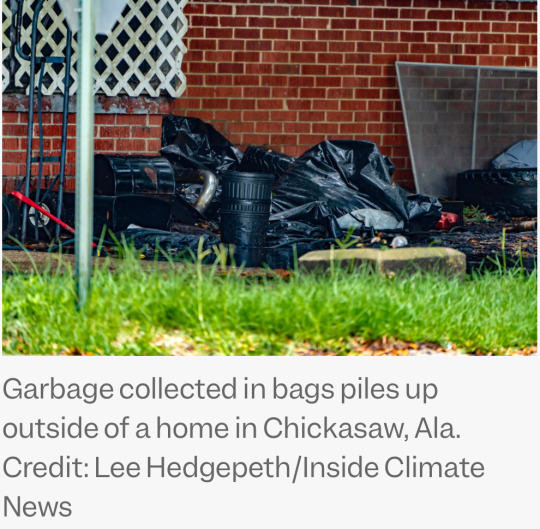
““Suspending garbage pickup, imposing harsh late penalties and prosecuting people who through no fault of their own are unable to pay their garbage and sewage bills does not make payment suddenly forthcoming,” West said. [… The city] has agreed to drop pending criminal charges against its residents over unpaid garbage bills.”
9. New Hampshire’s low-income community solar program finally moves forward
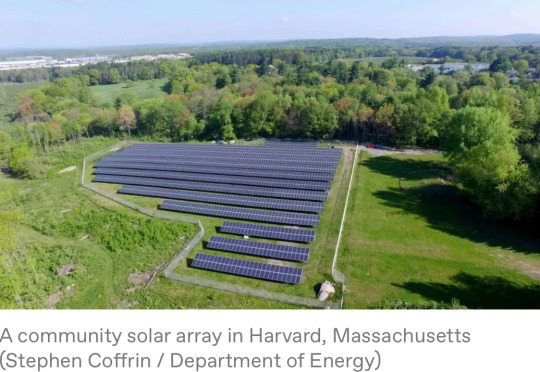
“The state energy department is reviewing seven proposals for community solar arrays that will allocate a portion of their bill credits to low-income households. […] New Hampshire’s strategy of working with utilities to automatically enroll households that have already been identified streamlines the process.”
10. The Future Looks Bright for Electric School Buses

“EPA has awarded about $3 billion in grants from the infrastructure law, which paid to replace about 8,700 buses. Of those, about 95 percent are electric. [… Electric buses are] cheaper to operate and require less maintenance than diesel buses and will soon be at cost parity when looking at the lifetime cost of ownership[….]”
October 1-7 news here | (all credit for images and written material can be found at the source linked; I don’t claim credit for anything but curating.)
#hopepunk#good news#dogs#hurricane milton#florida#animal shelters#foster dog#hawaii#hawaiʻi#maui#solar#water#solar energy#coral#endangered species#coral reef#turtles#sea turtle#technology#wildlife#habitat#nature#california#rio#south america#reforestation#poverty#anti capitalism#solar panels#electric vehicles
190 notes
·
View notes
Text
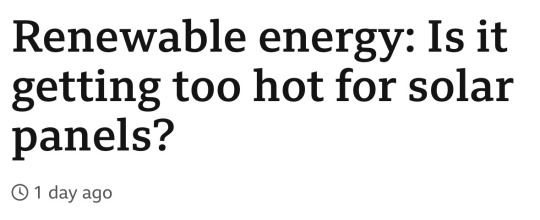

Source
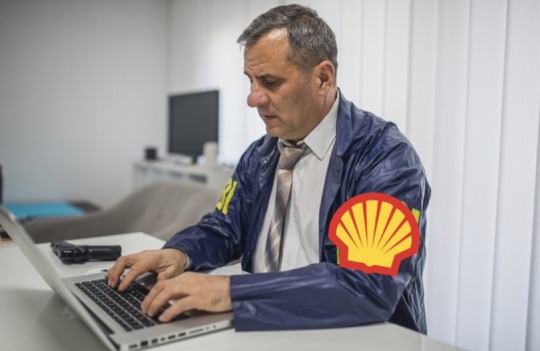
#capitalism#government#solar energy#solar panels#solar power#renewable electricity#climate change#news#current events#the left#ban fossil fuels#green energy#green new deal
915 notes
·
View notes
Link
“In France, solar just got a huge boost from new legislation approved through the Senate this week that will require all parking lots with spaces for at least 80 vehicles – both existing and new – to be covered by solar panels.”
“The new provisions are part of French president Emmanuel Macron’s large-scale plan to heavily invest in renewables, which aims to multiply by 10 the amount of solar energy produced in the country, and to double the power from land-based wind farms.”
373 notes
·
View notes
Text
Renewable Energy: Powering a Sustainable Future
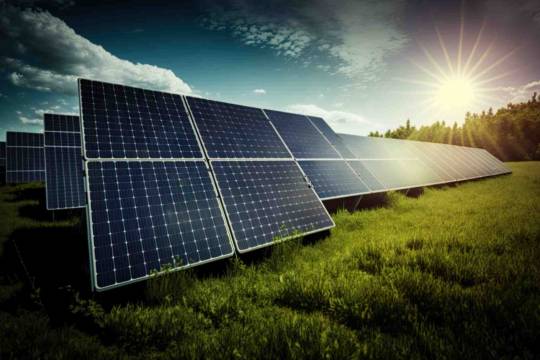
#Renewable #energy is the cornerstone of a sustainable future, offering a path to reduce our dependence on fossil fuels and mitigate climate change. Solar, wind, hydro, and geothermal power harness the natural forces of the Earth to generate electricity without emitting harmful greenhouse gases. Unlike finite fossil fuels, these resources are abundant and renewable, ensuring long-term energy security.
The shift to renewable energy is essential not only for environmental reasons but also for economic growth. Investing in clean energy technologies creates jobs, drives innovation, and fosters energy independence. As countries worldwide set ambitious targets for carbon neutrality, the adoption of renewable energy is accelerating, with solar and wind power leading the charge.
However, challenges remain. The intermittent nature of some renewable sources, like solar and wind, requires advancements in energy storage and grid infrastructure. Despite these challenges, the future of energy is undoubtedly green. By continuing to invest in renewable energy, we can power a sustainable future that benefits both people and the planet.
Click to Check:- https://www.headsupb2b.com/renewable-energy
#solar system#solar energy#solar power#solar panels#renewable energy#green technology#solar#solarpunk#hopepunk#humanity#electricity#clean energy#solar age#renewables#green energy#fossil fuels#good news#climate change#climate hope
8 notes
·
View notes
Text
A few hundred metres above the commune of Cruis, in the Alpes-de-Hautes-Provence region, Sylvie Bitterlin, a 62-year-old actress, stands in front of the security fence of a brand-new solar farm.
“Look, they've destroyed everything,” she says.
On the 17-hectare site, the garrigue or scrubland of Provence has been replaced by several thousand solar panels.
The project has been under construction for several months and is nearly finished. According to the operator, Boralex, a Canadian renewable energy company, the site will generate 14.9 megawatt-peak hours of electricity, enough to power a community of 12,000 residents.
Boralex’s managing director, Jean-Christophe Paupe, claims the park makes “an indispensable contribution ... at a time when France is lagging behind in the development of renewable energies”.
But as the project nears completion, Bitterlin makes no secret of her frustration and anger.
Since 2019, she and about twenty other members of the local citizens group Elzéard, Lure en résistance have been fighting tooth and nail to prevent the plant from going ahead.
They say the solar park, partly installed in an area classified as a “biosphere reserve” by UNESCO, will endanger several protected species and their habitat.
Alexanor butterfly and ocellated lizard
“We're told that Provence has poor soil, that there's nothing in it. But this is totally false. We have medicinal plants, thyme, rosemary, orchids ... These are fantastic plants, home to protected species. It's all about life,” says Bitterlin, who has become the movement's spokeswoman.
“Before, this landscape stretched all the way to the top of the mountain,” she says, against the backdrop of the picture-postcard setting of the 1,826-metre-high Montagne de Lure. “What destruction! What a disaster! Where's the ecology when we raze forests and destroy biodiversity to produce energy?”
According to Pierrot Pantel of the Association Nationale pour la Biodiversité (ANB), who took up the case on behalf of the Elzéard collective, 88 animal species have been recorded in the area.
These include several protected species of birds, butterflies such as the Alexanor, with its yellow and black wings, and lizards such as the ocellated lizard – the largest in Europe. “Many animals will have fled their habitat or will have died during the construction work,” he says.
Boralex insists that the project, officially launched in 2009, is the result of “more than five years of environmental and landscape studies, in partnership with the French government”, and that “everything possible has been done” to protect biodiversity.
“Initially, the park was designed to cover several dozen hectares, but its size was reduced to take account of this issue,” explains Paupe.
“And we have put in place a whole series of measures to preserve species: we have adapted our work periods, set up biodiversity corridors, restored habitats,” he says.
But opponents of the solar farm decry these measures as inadequate and say they are just “smoke and mirrors”.
In an area known for its biodiversity, a few "ecological corridors" won’t compensate for the damage caused by building the site, they say.
'An example of what needs to be done in the EU'
Paupe says that the farm "aligns perfectly with French and European ambitions for energy transition” and is “essential in the fight against global warming”.
“What's more dangerous for biodiversity: climate disruption or photovoltaic panels?” he quips.
Indeed, the European Green Deal's overarching aim is to make the EU the world's first "climate neutral bloc" by 2050.
The EU is therefore aiming to massively accelerate the development of renewable energy in a bid to reduce its dependence on fossil fuels, which are the main cause of climate change.
Under the terms of the deal, renewable energies will account for 42.5% of the energy mix by 2030, up from 23% in 2022. France shares this aspiration and passed a law to accelerate the production of renewable energy in March 2023.
But Paupe argues that "this ambition is only achievable if we agree to develop large-scale projects, like the one at Cruis", drawing on studies carried out by RTE, France's electricity transmission company.
“Today, we can't be satisfied with solar panels on the roofs of houses and in areas that are already industrialised. Of course we need solar panels in these places too. But that won't be enough.”
Boralex says there were good reasons for selecting the Lure mountain area for the solar park.
“The PACA region has a lot of sunshine and strong photovoltaic potential. However, it currently imports a large proportion of its electricity. The Cruis power plant therefore helps to resolve this paradoxical situation,” he continues. “In short, it's an example of what needs to be developed across the European Union to move away from fossil fuels. But it will take multiple projects like this one to get there.”
Apart from the arguments put forward by Boralex, projects like this one also provide significant funds for the municipalities concerned.
In Cruis, revenues generated by the solar plant make up 20% of the municipal budget, according to mayor Félix Moroso.
“Over the past two years, it has enabled us to renovate a parking lot, start work on the school and reintroduce aid for disadvantaged groups,” says Moroso, who has been the mayor of the village of 700 inhabitants for 35 years.
“All this at the cost of photovoltaic panels on 1% of our commune”, he adds, expressing annoyance at the actions of the park’s opponents.
But Bitterlin says the project is “not the solution. We're razing forests to put up photovoltaic panels. We're caught in a paradox."
“The first thing to do is to reduce our consumption. If we really adopted more sober lifestyles, would we still need these huge power plants in natural environments?”
“The problem with these parks is their giant size. We wouldn't be against reasonable photovoltaic projects, in line with the needs of the population,” she says. “Unfortunately, we've adopted the financial logic of companies and communes that seem to simply want to make money.”
Months of mobilisation
The situation in Cruis became particularly tense in September 2023 when construction began. “We'd spent years trying to alert and educate the population, to no avail. So when we saw the construction equipment arriving on the mountain to destroy everything, we decided to take action," Bitterlin noted.
For weeks, and in all weathers, Bitterlin and the other activists tried almost daily to block the construction site.
“Never in my life did I think I'd ever chain myself to construction machinery, get under its wheels or climb trees to block work,” said Bitterlin, who says she’s never been the rebellious type. “But the cause was too important,” she says.
On October 4, 2023, Bitterlin and fellow activist Claudine Clovis, 72, were arrested by gendarmes as they lay under the wheels of earth-moving machinery.
They were taken into custody and detained overnight. They were eventually found guilty of obstructing traffic in February 2024 by the criminal court in Digne-les-Bains and sentenced to a suspended fine of €1,200 and a three-month suspension of their driving licenses. The two defendants will also jointly pay €5,000 towards Boralex's legal costs.
Although they have decided to appeal the decision, their arrest put a stop to their campaigning. “We had to keep a low profile and, above all, Boralex stepped up its surveillance,” Bitterlin says. “And, frankly, we were exhausted both physically and morally by those weeks of fighting.”
But the Elzéard group has not given up entirely. Although no one is currently physically blockading the Cruis solar plant, the activists have taken their fight to the courts, with legal assistance from Pantel and ANB.
Over the past four years, the collective – with support from a dozen other environmental groups – has filed three complaints with the Digne public prosecutor for “destruction, alteration and degradation of the habitat of protected animal species” and “undermining the conservation of protected animal species”. According to Pantel, Boralex had in fact begun work on the plant before obtaining all the necessary permits.
A victory in court
In a big win for the activists, on Friday May 31, Boralex and the French government were found to be at fault by the Marseille Administrative Court of Appeal for failing to find an alternative site which would have had less impact on biodiversity.
The administrative judges found in favour of the collective, whose complaint had been dismissed by the court of first instance. The complaint challenged an order issued in 2020 by the Prefect of Alpes-de-Haute-Provence, granting Boralex an exemption from the prohibition on destruction, intentional disturbance or degradation of specimens and habitats of protected animal species.
“It's a great victory. The site is now considered illegal. Work will have to stop and the site cannot be exploited for the time being," says Pantel. “It also legitimises our actions and the disruption to the site – which is important for the Sylvie Bitterlin and Claudine Clovis trial. Finally, it's educational: this judgment shows that you can't destroy a natural habitat with impunity.”
Anticipating that Boralex will take this judgment to the Conseil d'État, the highest court of appeal, Pantel now hopes to reach a final ruling. “We will then go and demand restoration of the site, recognition of the ecological damage and we'll try to question the State's responsibility.”
For its part, however, Boralex believes that the cancellation of this protected species exemption “does not call into question Boralex's right to operate the Cruis solar power plant, nor does it call into question our presence on the site or the finishing work on the plant, which is not affected by this protected species exemption”, the company told AFP.
“This judgment also legitimises our future actions,” says Pantel. Aside from Cruis, some thirty photovoltaic projects are currently under way on the Lure mountain, eventually covering a thousand hectares, according to Pantel’s estimate.
“And we intend to prevent as many as we can,” adds Bitterlin.
A network of sentinels
One of the activists’ new battlegrounds lies a few kilometres from Cruis, in the commune of Montfort. Some 20 hectares have already been cleared.
In January, construction equipment levelled the pines and oaks and soon earth-moving machines will install a new photovoltaic park, operated by Engie Green. It will be the fourth park in this commune of 300 inhabitants.
“We weren't informed when the work started. We arrived too late to prevent the felling of the trees," says Bitterlin.
At the end of May, accompanied by her friend Véronique, also an activist, they came to see the progress of the site. “We were worried about seeing earth-moving equipment,” they say.
With a tape measure in hand, they walked around the site with one objective in mind: to check that Engie Green was complying with all regulations. Cut down a protected tree? Destroy the habitat of a protected species? An information panel removed? Everything is carefully examined. But today, everything seems to be in order.
“We won't be demonstrating here, and we won't be obstructing the work. In any case, it's already too late – once the clearing is done, there's not much left to defend,” they say.
“But we remain vigilant to strict compliance with the rules and are putting our energy into other projects.”
A few kilometres away, in the commune of Banon, Sophie and Nadine keep watch on the areas affected by other solar projects, including one led by a Korean company, QEnergy.
Aged 64 and 72 respectively, the two pensioners admit to being “constantly on the lookout”, “tracking down the slightest noise of construction work” to “check that building work isn’t starting”.
“I go walking in the area every day anyway,” explains Sophie. “Here, at certain times of the year, you can hear deer snorting. It's an incredible natural place. It can't disappear,” she says.
In her large garden with a totally unobstructed view of the surrounding countryside, she says she’s proud of having her own photovoltaic panels, but “only those necessary for her personal electricity consumption”.
“Do we really need to develop large-scale power plants? Isn't the solution first and foremost to take stock of our energy use?” she asks, echoing opponents of such projects in France.
“It's really the multiplication of these projects that's worrying. Are we really going to punch holes in the mountain from all sides?” asks Nadine.
“In addition to biodiversity, we're also touching on a whole literary heritage, the mountain so dear to Jean Giono!” she warns, referring to the writer who drew such inspiration from the Lure mountain.
The Green Deal was a central feature of outgoing EU president Ursula Von der Leyen's last term of office, and a new parliament will be formed after European elections on June 9.
Bitterlin said she hopes that the issue of solar parks in environmentally sensitive areas will be taken up by candidates for the new EU parliament.
“We've succeeded in making Cruis a symbol of our campaign,” she says, adding that what matters now is to prevent other environmentally disruptive projects from being built.
#nunyas news#maybe instead of tearing out a bunch of nature#you just start planting those solar panels on peoples roofs#give them a bit of a discount on electricity in exchange for the space
8 notes
·
View notes
Text
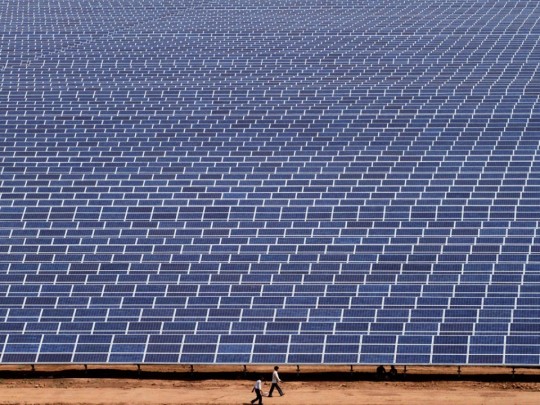
Gujarat Solar Park, India
20 notes
·
View notes
Text
The Solar Saga
So….. This post has been a long time coming.
NO, IT'S NOT BAD, I SWEAR!
This is the final post of the Solar Panel Saga, a grueling process which took far longer than it should.
SO.
Let us.
BEGIN!
For those of you that do not know, I'm homeless, living in a van. Not by choice, but hey, what can you do?
As a normal adult in the 21st century, I need power.
As a normal adult in a van from 1998, I can't rely on the engine to do it. So I had been thinking of something like this even since I first ended up homeless. but I believed all the solutions for this were impossibly expensive.
then, in February 2024, I found the BOX!
for just ten dollars plus shipping, I could control a solar panel. it seemed like magic! like a Sign! so I purchased it. Along with what proved to me a dramatically inadaquate solar panel, although I didn't know that at the time.
this led eventually to the search for a batter system that would work, and I already had the perfect idea in mind.
in my local (unnamed for legal reasons) big box store, in the marine section, was a battery box with a built-in system of outlets. TWO 12v DC automotive ports! TWO USB Connections! one USB-C and one USB-A! a BREAKER! and a HIGH-POWER EXTERNAL WING NUT CONNECTION DIRECTLY TO THE BATTERY!!!
It was perfect. and only 30ish bucks. the problem, was the battery.
Batteries are expensive. the battery I needed was a Deep Cycle battery, a type of lead-acid battery designed for long charge and discharge cycles. such a battery is a fairly niche item. I didn't and in fact couldn't find one in my big box store. so. I waited for my next paycheck, and went in search of a battery.
turns out ten seconds of googling found a battery store, like, a half mile from my usual parking spot. lol.
with much consternation and a great deal of money ($160is all told) I had my battery. Extensive testing would confirm its functioning in the box.
Now, a PANEL!
In days of Old, when Men were Bold, and whiskey was far, FAR cheaper: solar panels sucked. and were really expensive. when last I had looked into the idea a decade or more before, the best panels were hundreds to thousands of dollars and, while they generated useful power, were finicky about light conditions. then I discovered Mono-Crystal panels, and was amazed. 50 watts for 64 dollars. just over a dollar a watt. larger panels were even cheaper: 1000w of panels came to barely $800! incredible! said I, this would be no problem at all! Until i membered. I'm homeless.
Fuck.
While technically I have a mailing address, that address is at a homeless support place (where you can shower, and do laundry, and get meals, rather than sleep), which is infamous for questionable support staff, long wait times, and not the best service in the world. so.
Shipping a large, expensive, fragile piece of equipment there was a no-go.
then I saw the hardware store I was buying it from had ship to store.
YAY, COVID! (bout the only good thing to come from the Plague. or maybe before? idk.)

So I shipped it there, picked it up, and now was the time to Mount it to the roof!
And this, is where my troubles Truly Began.
At first, I thought to magnet the thing to the roof, so I bought some magnets.
NOPE!
Fiberglass
Then I thought to screw it in.
NOPE!
Couldn't get a drill in the panel
Suction cup?
NOPE!
not strong enough
Glue?
NOPE!
Wasteful, infective, and long cure time
fuck the whole business?
NOPE!
Still need power!
So. after weeks of waiting for money and days off to try shit, I decided on a plan:
Get some Plywood Glue it to the roof get some metal glue it to the board magnet panel to metal.
easy, simple, I need a stepladder, but I can just go to the hardware store, buy then return one. so I got to work.
the glue didn't hold the metal. or the wood very well, for that mater.
so, I relented, bought some screws, a drill, and some drill bits, and on the evening of May 28, 2024, finally saw my dream of solar power through.
it's the end of June now, and my little panel has done well. the metal is rusted orange, the wood is curved and warped, the magnets hold steady, and duct tape keeps the wires out of the doors.
But.
I'm typing this on a laptop powered by solar. and that's Damn Good.

The Panel, Herself.
I’m poor, Homeless, and jobless, please give me money, so I don't starve!
#weird#homeless#solar#panel#solar panel#The Solar Panel Saga#van#vanlife#powe#power#electrical#battery#lead-acid#way harder than it should be#thank fuck its over#begging#money pls#signal boost
6 notes
·
View notes
Text
youtube
This car just drove across Morocco using zero fossil fuels — here’s how 🚘
#now this earth#now this#solarpunk#ev#electric vehicle#Morocco#africa#solar power#solar energy#clean energy#green energy#renewable energy#solar car#solar panels#Youtube
3 notes
·
View notes
Text
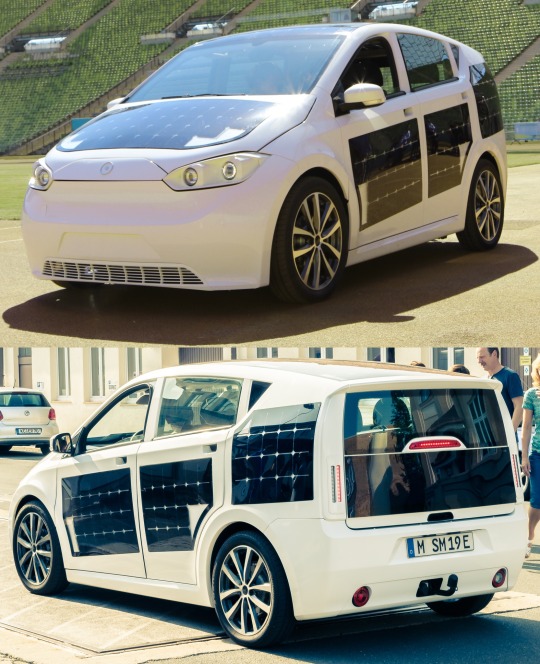
Sono Motors Sion
#electric vehicles#electric vehicle#ev#solar power#sono motors#sion#solar powered car#solar powered#solar panels#wikipedia#wikipedia pictures#renewable power#renewable energy#cars#vehicles#automobile#carblr#car blog#sono motors sion#sono sion#sono#transportation#transport#energy efficiency
11 notes
·
View notes
Text
African poverty is partly a consequence of energy poverty. In every other continent the vast majority of people have access to electricity. In Africa 600m people, 43% of the total, cannot readily light their homes or charge their phones. And those who nominally have grid electricity find it as reliable as a Scottish summer. More than three-quarters of African firms experience outages; two-fifths say electricity is the main constraint on their business.
If other sub-Saharan African countries had enjoyed power as reliable as South Africa’s from 1995 to 2007, then the continent’s rate of real GDP growth per person would have been two percentage points higher, more than doubling the actual rate, according to one academic paper. Since then South Africa has also had erratic electricity. So-called “load-shedding” is probably the main reason why the economy has shrunk in four of the past eight quarters.
Solar power is increasingly seen as the solution. Last year Africa installed a record amount of photovoltaic (PV) capacity (though this still made up just 1% of the total added worldwide), notes the African Solar Industry Association (AFSIA), a trade group. Globally most solar PV is built by utilities, but in Africa 65% of new capacity over the past two years has come from large firms contracting directly with developers. These deals are part of a decentralised revolution that could be of huge benefit to African economies.
Ground zero for the revolution is South Africa. Last year saw a record number of blackouts imposed by Eskom, the state-run utility, whose dysfunctional coal-fired power stations regularly break down or operate at far below capacity. Fortunately, as load-shedding was peaking, the costs of solar systems were plummeting.
Between 2019 and 2023 the cost of panels fell by 15%, having already declined by almost 90% in the 2010s. Meanwhile battery storage systems now cost about half as much as five years ago. Industrial users pay 20-40% less per unit when buying electricity from private project developers than on the cheapest Eskom tariff.
In the past two calendar years the amount of solar capacity in South Africa rose from 2.8GW to 7.8GW, notes AFSIA, excluding that installed on the roofs of suburban homes. All together South Africa’s solar capacity could now be almost a fifth of that of Eskom’s coal-fired power stations (albeit those still have a higher “capacity factor”, or ability to produce electricity around the clock). The growth of solar is a key reason why there has been less load-shedding in 2024...
Over the past decade the number of startups providing “distributed renewable energy” (DRE) has grown at a clip. Industry estimates suggest that more than 400m Africans get electricity from solar home systems and that more than ten times as many “mini-grids”, most of which use solar, were built in 2016-20 than in the preceding five years. In Kenya DRE firms employ more than six times as many people as the largest utility. In Nigeria they have created almost as many jobs as the oil and gas industry.
“The future is an extremely distributed system to an extent that people haven’t fully grasped,” argues Matthew Tilleard of CrossBoundary Group, a firm whose customers range from large businesses to hitherto unconnected consumers. “It’s going to happen here in Africa first and most consequentially.”
Ignite, which operates in nine African countries, has products that include a basic panel that powers three light bulbs and a phone charger, as well as solar-powered irrigation pumps, stoves and internet routers, and industrial systems. Customers use mobile money to “unlock” a pay-as-you-go meter.
Yariv Cohen, Ignite’s CEO, reckons that the typical $3 per month spent by consumers is less than what they previously paid for kerosene and at phone-charging kiosks. He describes how farmers are more productive because they do not have to get home before dark and children are getting better test scores because they study under bulbs. One family in Rwanda used to keep their two cows in their house because they feared rustlers might come in the dark; now the cattle snooze al fresco under an outside lamp and the family gets more sleep.
...That is one eye-catching aspect of Africa’s solar revolution. But most of the continent is undergoing a more subtle—and significant—experiment in decentralised, commercially driven solar power. It is a trend that could both transform African economies and offer lessons to the rest of the world."
-via The Economist, June 18, 2024. Paragraph breaks added.
#one of the biggest stories of this century is going to be the story of the African Renaissance#I promise you#well preferably they'll come up with a non-European term for it lol#but trust me it WILL happen and it will be SO good to see#africa#south africa#nigeria#kenya#solar#solar power#solar panels#solar pv#energy#clean energy#poverty#electrification#distributed energy#electricity#infrastructure#hope#solarpunk#good news#solar age#<- making that a tag now
411 notes
·
View notes
Text
Solar Panels for Home in Coimbatore: On-Grid Benefits

As the interest in renewable energy grows, many homeowners in Coimbatore are considering the installation of solar panels. One of the most efficient ways to harness solar panels for home is through an on-grid solar system. This blog will explore the benefits of installing solar panels for homes in Coimbatore, focusing on the advantages of on-grid systems.
What is an On-Grid Solar System?
An on-grid solar system is directly connected to the public electricity grid. This means that during the day, your solar panels generate electricity, which is first used to power your home. Any excess electricity is sent back to the grid, and you can receive credit for this through net metering. At night, or when the solar panels are not generating enough power, your home can draw electricity from the grid.
Advantages of Solar Panels for Home in Coimbatore
Reduced Electricity Bills
Benefit: The primary benefit of installing an on-grid solar system is the significant reduction in your electricity bills. Coimbatore receives ample sunlight throughout the year, which means your solar panels can generate a substantial amount of electricity, offsetting your grid consumption.
Net Metering
Benefit: Net metering allows you to send excess electricity generated by your solar panels back to the grid. This can result in either reduced electricity bills or, in some cases, credits that can be used in future billing cycles.
Low Maintenance
Benefit: On-grid systems are relatively low maintenance compared to off-grid systems. Since there are no batteries involved, there is no need for regular battery maintenance or replacement.
Environmentally Friendly
Benefit: By using solar energy, you are reducing your carbon footprint. Solar panels produce clean, renewable energy that does not contribute to air pollution or greenhouse gas emissions.
Government Subsidies
Benefit: The Indian government offers various subsidies and incentives for solar panel installations. These can significantly reduce the upfront cost of your solar system, making it more affordable for homeowners in Coimbatore.
Disadvantages of On-Grid Solar Systems
No Backup During Power Outages
Drawback: On-grid systems do not provide power during grid outages. This can be a limitation in areas with frequent power cuts unless paired with a battery backup system.
Initial Installation Cost
Drawback: While solar panels can save you money in the long run, the initial installation cost can be high. However, this can be offset by government subsidies and long-term savings on electricity bills.
Solar Panel Costs in Coimbatore
The cost of installing solar panels for homes in Coimbatore varies depending on the size of the system, the type of panels used, and the complexity of the installation. On average, the cost can range between ₹40,000 to ₹70,000 per kW. For a 3 kW system, which is suitable for most homes, the cost would be around ₹1,20,000 to ₹2,10,000.
Long-Term Savings and Return on Investment (ROI)
ROI: With the savings on electricity bills and the potential income from net metering, the ROI for solar panel installation in Coimbatore can be as short as 4 to 6 years. After this period, the electricity generated by your solar panels is essentially free, leading to substantial long-term savings.
Zero Electricity Bills: During the summer months, when air conditioners are running continuously, many homeowners report zero electricity bills thanks to their solar panels. This is especially true for homes with a 3 kW or larger system.
Conclusion
Investing in solar panels for your home in Coimbatore, particularly an on-grid system, is a smart decision. It not only reduces your electricity bills but also contributes to a greener environment. With the added benefits of government subsidies and the potential for net metering, now is the perfect time to make the switch to solar energy.
For more insights on solar panel installation, including dos and don’ts for home installations, refer to our detailed guide on Solar Panels for Home .
2 notes
·
View notes
Text
Dandelion News - October 1-7
Like these weekly compilations? Tip me at $kaybarr1735 or check out my Dandelion Doodles on Patreon!
1. Arctic ozone reaches record high in positive step for climate

“Above-average ozone levels continued to persist through September 2024. This is significant as, previously, spring has been associated with ozone depletion[….] The March 2024 ozone average peaked at 477 Dobson units (DU), which is 6 DU higher than the previous record in March 1979 and 60 DU higher than the average for the study period (1979 to 2023).”
2. Why Massachusetts loves Nibi the beaver and [won the fight] to keep her out of the wild

“Nibi, now 2 years old, is roughly the age when wild beavers embark on their journey to find a mate and build a home. [… But] if Nibi is released in October, she would be ill-prepared for the winter[…. The governor has] issued a permit for Nibi to remain at a wildlife rescue as an educational beaver and inspire folks to protect our natural world."”
3. In Madagascar, Taniala Regenerative Camp aims to heal deforestation scars

“Residents of the villages around Lambokely manage the nursery and market garden crops. “Local communities receive training in agroecology and agroforestry, benefit from improved soil fertility, and earn additional income from intercropping in the agroforestry plots. In addition, community members are incentivized to participate in tree-planting activities.””
4. Tunica-Biloxi Tribe of Louisiana Breaks Ground on $6.4 Million Affordable Housing Project

“The project’s first phase will create three-bedroom homes designed for multiple purposes, including elderly housing, emergency shelter, and support for displaced and low-income Tribal citizens. These homes will be built to meet Americans with Disabilities Act (ADA) standards, ensuring accessibility for all.”
5. Scientists say painting roofs this colour could save lives: How does it keep cities cool?

“[Researchers] found that cool, light-coloured roofs installed across all of London’s roofs could have cooled the city by around 0.8C [in 2018]. [… Solar panels] could have cooled the city by around 0.3C, preventing the deaths of 96 people [… while generating] more than half the energy [used by] London during the entire year of 2018.”
6. Travis County [TX] opens center to help keep people experiencing a mental health crisis out of jail

“The walk-in urgent care facility is open 24/7 and provides immediate support for people experiencing mental health crises. From there, some patients may be referred to a residential facility[… where] patients will be able to stay for up to 90 days[….] Jailed individuals may also work with their legal teams to coordinate admission to the facility.”
7. Spain’s first transgender soccer team makes debut in regional men’s league

“A soccer team consisting entirely of transgender men has[…] become the first all-trans squad to achieve federated status in Europe. […] Spain passed a pioneering trans rights bill last year designed to make it easier to change a person’s legal gender identity. […] Players may also choose to use a name that’s different from their legal one[….]”
8. Green Status of Species: Pushing Conservation Ambitions Beyond Preventing Extinction

“[… T]he Green Status of Species [is] a new part of Red List assessments that helps tell “a species’ full conservation story.” […] In addition to quantifying species recovery, the Green Status of Species […] will help to better inform future conservation actions by shedding light on which past actions have contributed most to species recovery.”
9. Hell froze over in Texas – the state will connect to the US grid for the first time via a fed grant

“[The projects will] boost grid reliability, lower energy costs, and support the clean energy transition. […] They’ll also generate nearly 9,000 jobs, supporting local economies[…. In particular, the Texas portion is] designed to prevent outages like the ones during Winter Storm Uri that hit Texas hard in 2021.”
10. Pine martens released to be reintroduced to Devon

“Work to release 15 pine martens into woods across Dartmoor has been completed[….] The eight females and seven males have all been fitted with a radio collars to allow their movements to be tracked. […] They were kept in soft-release pens for three days to get them used to their surroundings before being allowed to run wild, staff said.”
September 22-28 news here | (all credit for images and written material can be found at the source linked; I don’t claim credit for anything but curating.)
#hopepunk#good news#nature#ozone#ozone layer#climate change#beaver#madagascar#forest#louisiana#native#affordable housing#housing#low income#global warming#solar panels#mental health#incarceration#texas#spain#transgender#trans men#soccer#football#conservation#endangered species#electricity#clean energy#pine marten#animals
73 notes
·
View notes
Text
Trump would pull out of Paris climate treaty again – and Harris faces tough choices
#climate change#2024 presidential election#donald trump#kamala harris#paris climate agreement#china tariffs#electric vehicles#solar panels
2 notes
·
View notes
Text
OSCER
Aloha kākou. The County of Hawai’i island has created a new Office of Sustainability, Climate, Equity and Resilience (OSCER). Big Island Mayor Mitch Ross signed Bill 48 creating a new cabinet level office that will create a “Climate Action Plan.” To hopefully build a more sustainable and resilient future for the island’s children. It’s always about the children. “In order to make sure that our…

View On WordPress
#Climate Change#Climate Hoax#cost of living#Electricity#Environment#Fossil Fuels#Global Warming#government#Hawai&039;i#Hawaii County#liberalism#Made In China#OSCER#Rolling Blackouts#solar panels#windmills
2 notes
·
View notes